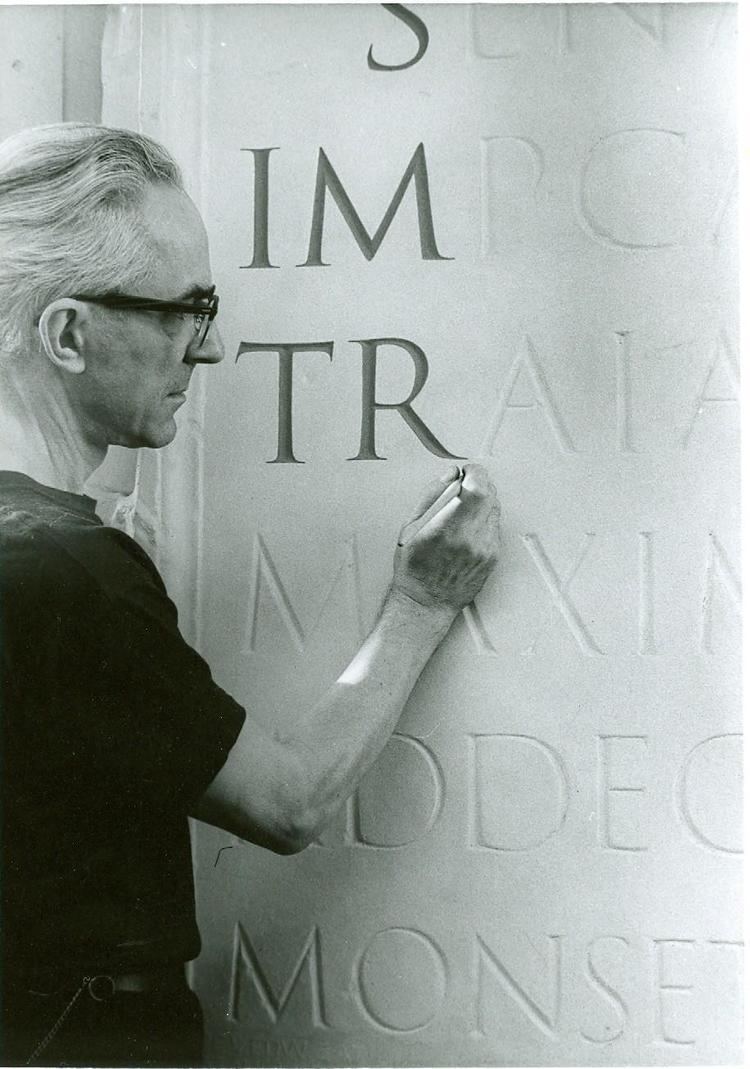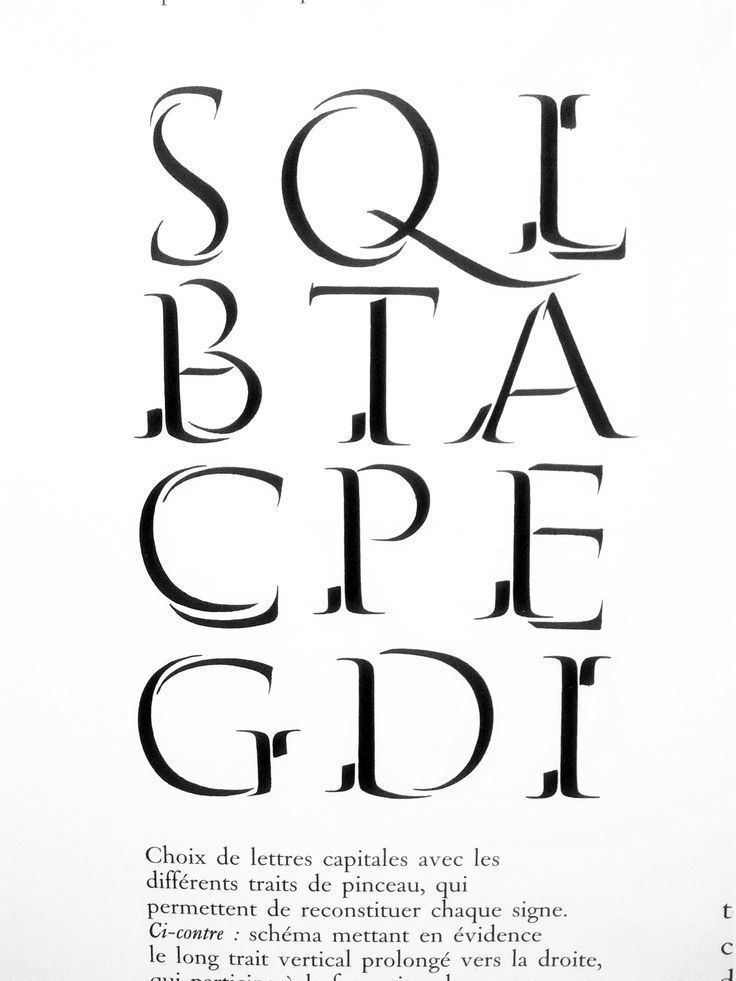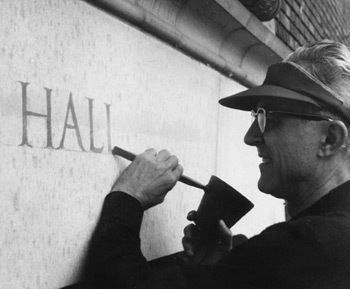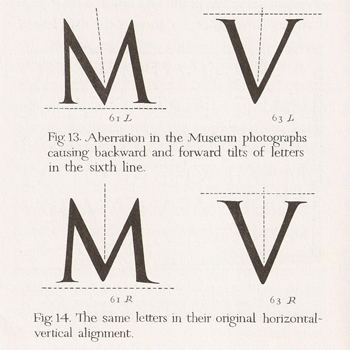Known for Education, calligraphy | Name Edward Catich Books The origin of the serif | |
 | ||
Education Pontifical Gregorian University, University of Iowa, St. Ambrose University, St Ambrose College | ||
Edward Catich
Edward M. Catich (1906–1979) was an American Roman Catholic priest, teacher, and calligrapher. He is noted for the fullest development of the thesis that the inscribed Imperial Roman capitals of the Augustan age and afterward owed their form (and their characteristic serifs) wholly to the use of the flat brush, rather than to the exigencies of the chisel or other stone cutting tools.
Contents

Life

His parents died when he was 11, and he and three brothers (including his twin) were taken by train to the orphanage of the Loyal Order of Moose, the Mooseheart campus near Aurora, Illinois.

At the orphanage he apprenticed under sign-writer Walter Heberling. After graduating high school in 1924, Catich toured with a Mooseheart band, and then went to Chicago, where he played music in bands, studied art at the Chicago Art Institute, and supported himself as a union sign-writer. Catich attended where he worked as the leader of the school band. He received a master's degree in art at University of Iowa in Iowa City.

He went to Rome in 1935 to study at Pontifical Gregorian University for the Catholic priesthood, where he also made a study of archaeology and paleography. He was ordained in 1938 and returned to Iowa to teach art, math, engineering, and music at St. Ambrose. As a priest, he served in parishes of the Diocese of Peoria, including ones in Atkinson and Hooppole.

Catich taught at St. Ambrose for forty years, until his death in 1979. The Davenport, Iowa, university now holds some 4,000 of his works, many from his legacy to Professor John Schmits, housed at the Edward M. Catich Memorial Gallery. The gallery was originally his studio and press at the Galvin Fine Arts Center and was built with a donation from Hallmark Cards, where several of his students worked.
He had ties to the Los Angeles County Museum of Art, Encyclopædia Britannica, and the Houghton Library at Harvard, and was a founder of the Catholic Art Association.
Works
Art is not freedom from discipline, but disciplined freedom.
His calligraphy and stone cutting work won Catich an international reputation, and he created many slate inscriptions using his brush and chisel technique. He created two typefaces, Petrarch and Catfish. Many of his books were published under his own press, The Catfish Press, which operated out of his studio at the university.
Besides calligraphy, Catich was accomplished at liturgical art, working in slate, stained glass, watercolor, and print, and he played the trumpet, cello, and harmonica.
Other institutions which hold his work include:
The Origin of the Serif
Studying in Rome as a seminarian in the late 1930s, he made a thorough study of the letter forms of the epigraphy on Trajan's Column.
While the brushed-origin thesis had been proposed in the nineteenth century, Catich, having worked as a union sign painter, made a complete study and proposed a convincing ductus by which the forms were created, using a flat brush and then chisel. He promulgated his views in two works, Letters Redrawn from the Trajan Inscription in Rome and The Origin of the Serif: Brush Writing and Roman Letters.
While the thesis is not universally accepted, electioneering posters excavated in Pompeii show unincised Imperial Roman capital titles (followed by body text in rustic capitals) brush-painted on certain walls.
